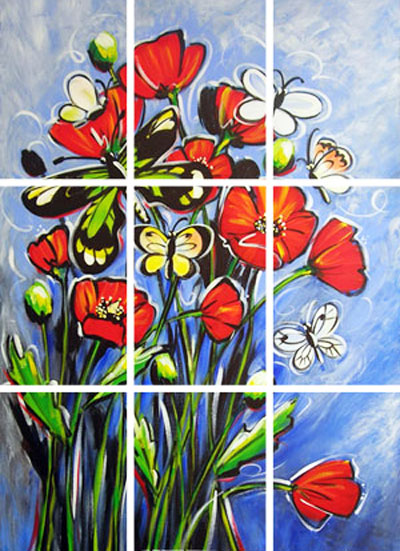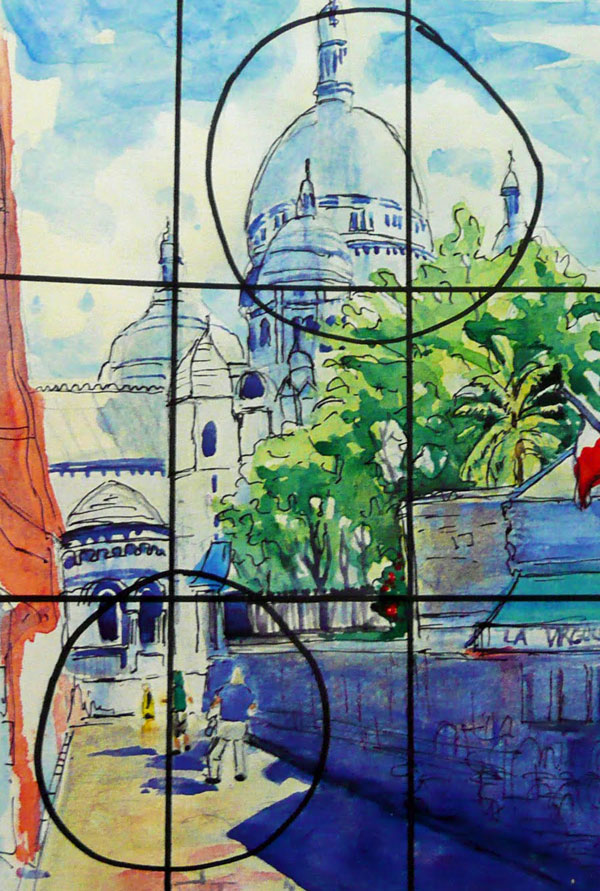The Rule of Thirds To Help With Painting or Drawing
This Simple Trick Will Help Your Painting or Drawing Immensely
To master a skill, we must learn the basics. When it comes to art composition, it can serve us well to become deeply familiar with basics such as the color wheel, negative spaces, painting rhythms, and the Rule of Thirds.
Once you begin adhering to the rule of thirds, it may be difficult for you to stop picturing it whenever you paint, draw or sketch.
The Rule of Thirds is a principle often used in visual arts, including drawing, painting, photography, and design. It provides a guideline for creating well-balanced and visually appealing compositions by dividing the picture plane into nine equal parts using two horizontal lines and two vertical lines that intersect at four points

Here’s how its done:
- When you have a clean canvas, either physically draw or simply visualize two sets of lines running horizontally and vertically across and up and down the blank space. It should look something like an empty tic-tac-toe board with nine equal parts. At the points where the lines intersect (and there will be four of them, creating in and of themselves their own sort of square) are to serve as your guides for your composition. Those four spaces are very important as they are the points at which the eye is naturally drawn. They are your focal points. Use them wisely.
- When composing your drawing, consider placing important elements, subjects, or points of focus along or near the intersections of these lines. This placement helps create a sense of balance, visual interest, and harmony within the artwork.
- Next, you want to use these four points in such a way that the eye is drawn , not only to those four spaces, but also in a way that the background(and essentially the painting as a whole) can be taken in. You do not want to make the mistake of creating an image that takes up the space directly in the center of the four intersections. They are your focal points; use them wisely.
- You can achieve the right kind of balance by starting with an object on one intersection, and then placing a secondary object at the opposing intersection. This will create a sense of of interest, tension and energy instead of centering on the subject. This is the trickiest part: Focusing on your subject yet also presenting the scene in its entirety. After all, you’re not painting a bull’s-eye ; you are making a moment in time to come to life, whether it is a bird in a tree, or a bowl of fruit on a farmer’s table.

Knowing the rules- and tuning your sense as to when they should be broken-is just another step in becoming a master of art, or in any field of life.
The rule of thirds was created for visual art, yet it can also be applied to photography and virtually and other type of graphic design. The underlying reason is this: It creates a pleasing composition, no matter what medium the artist (or photographer or designer) is using. This is because it prevents the composition being split in half, either horizontally or vertically. Instead, it allows the subject to grow into the most enhancing space.
It’s important to note that the Rule of Thirds is not a strict rule but rather a guideline that can be used to create visually pleasing compositions. Artists can choose to follow or deviate from this guideline based on their artistic vision and intentions. The Rule of Thirds is a tool to assist artists in achieving balance and compositional interest in their drawings, but it’s not a formula for success in every situation. Experimentation and personal artistic choices should also play a role in creating unique and expressive artwork.





